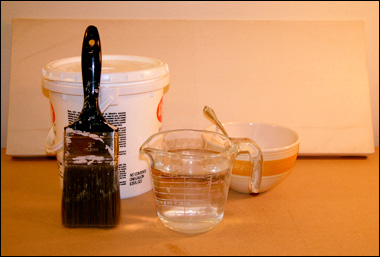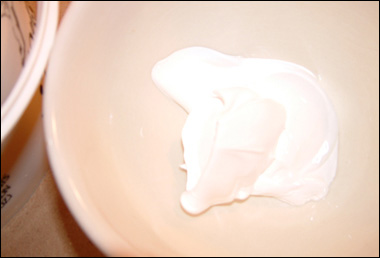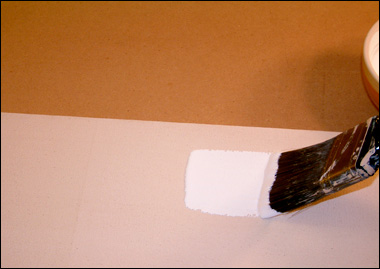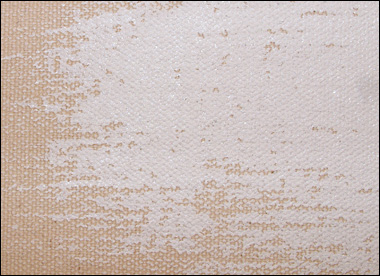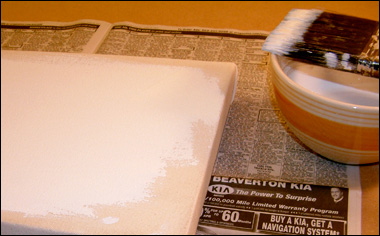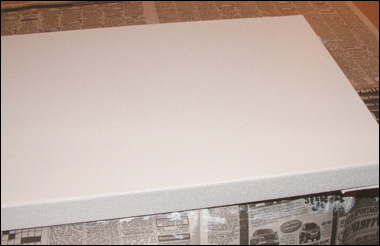Priming a canvas for oil painting isn’t difficult, and it’s not even necessary if you’re using pre-primed store-bought canvases.
But if you’ve made your own stretcher bars or even just stretched un-primed cotton canvas over store-bought stretcher bars then it’s very important to use Acrylic Gesso to cover the surface of your canvas before you put any oil paint down.
That being said, here’s a simple tutorial that will show you exactly how to prime a canvas.
Before you start, you’ll need a few ingredients: Acrylic Gesso (found at any art supply store), a regular house painting brush, some water, a bowl and spoon, and of course, your raw canvas.
Most Gesso is pretty thick, so you’ll need to mix it with water before priming. If you don’t, you’ll probably end up with a lot of bumpy acrylic brush marks on your canvas.
The first thing you need to do is grab a bowl, scoop out a dollop or two of the Gesso, and pour in some water.
I don’t really measure out specific amounts, I just add a little bit at a time until I get the consistency right.
Since you can always add more Gesso or water, don’t worry about making a mistake. If you’re curious though, for two scoops of Gesso I probably used half a cup of water
Take a couple of minutes to thoroughly mix the water and Gesso, getting rid of any chunks.
As long as it looks like cottage cheese, keep stirring.
When the Gesso has liquefied enough to drizzle quickly out of a spoon, you’re ready to begin priming.
You’ll know when you’ve added too much water if the Gesso won’t grab your spoon at all. Too little water and it’ll “glomp” into the bowl rather than drizzle.
Once the Gesso’s perfect, place the canvas in front of you just like you’ll have it when painting. Then brush the primer onto the canvas horizontally, from left to right and back again.
If this canvas was intended to be a tall, thin, vertical painting, then I would have applied the primer perpendicular to what is shown.
Since it’s meant to be a wide painting, I used long brush strokes across the whole width of the canvas.
It’s helpful to work in a well-lit area so you can see where any raw canvas is showing through the primer. Tiny little spots can slip through, even if you’re careful.
Make sure to go back and look for spots you missed, and don’t forget to prime the edges as well.
Check the edges of your canvas for runs or drips. If you find any, smooth them out with your brush before they dry.
The goal is a perfect, flawless surface, including the edges.
Once the entire canvas is covered, let it dry (it won’t take long) and then give it a second coat of primer.
And if you’ve thinned your Gesso down with a LOT of water, you might even consider three or four coats to ensure that the raw canvas is properly covered.
Once the final coat dries, you’re ready to paint!
This post may contain affiliate links.

